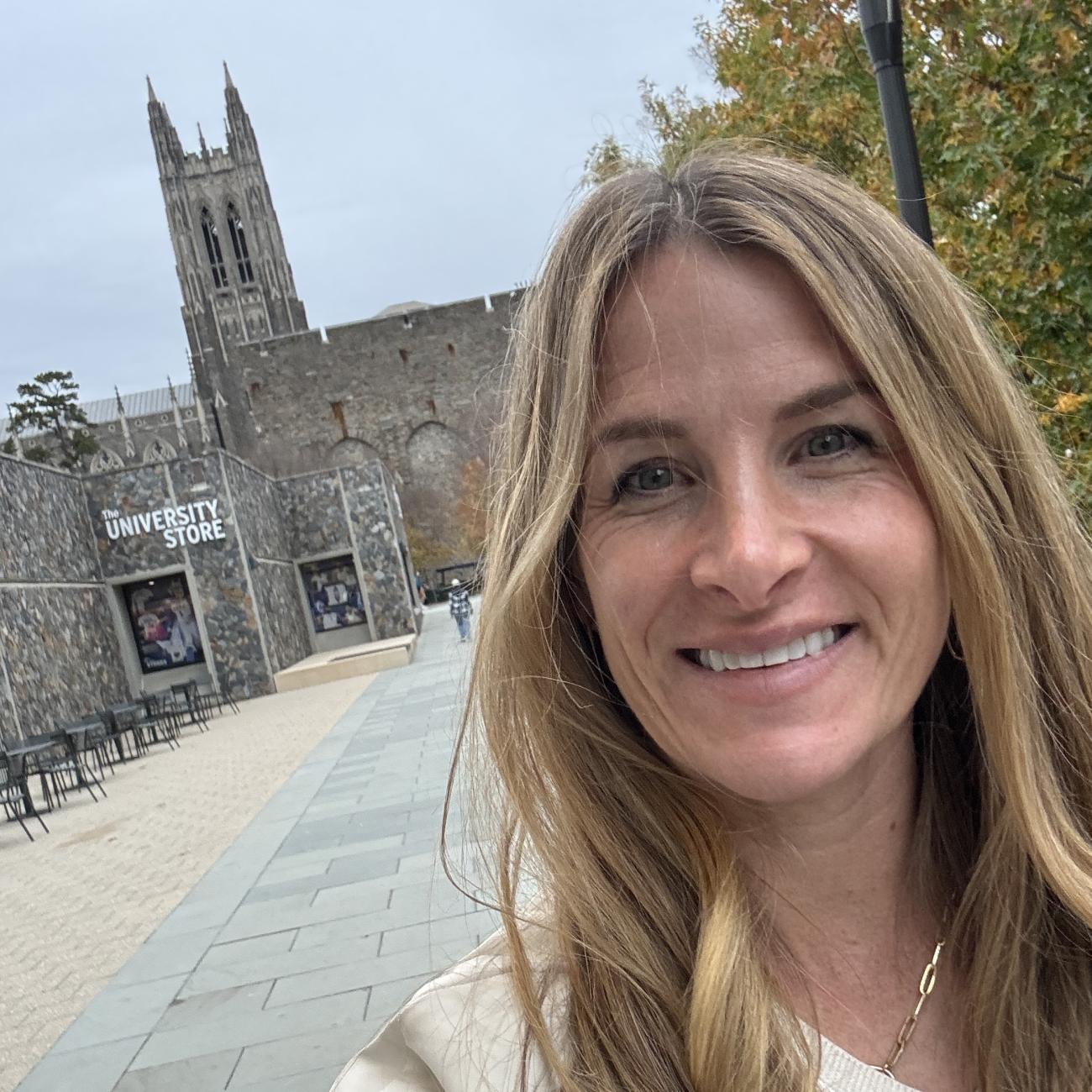Building a Better Solar Cell
Why isn't solar energy more widely used? After all, photovoltaic cells generate electricity out of sunlight, a free and essentially infinite resource.
One reason is that today's photovoltaic cells are relatively inefficient. They put out only about a quarter of the energy they take in from the sun. If that efficiency could be improved, solar panels could take up less real estate while pumping out more electricity.
“At the end of the day, efficiency is the challenge with solar energy,” says Adrienne Stiff-Roberts, PhD, who is the Jeffrey N. Vinik Professor of Electrical and Computer Engineering. “If solar cells are more efficient, then the technology is less expensive [per unit of electricity produced] and you're talking about renewable energy being a replacement for carbon-based energy sources.”
At Duke, Stiff-Roberts and her colleagues are working on new photovoltaic technology that could one day capture more energy from sunlight.
One way to increase the efficiency of solar cells is to change their chemical makeup. Current solar cells use silicon, an inorganic element that's long lasting, great at transporting electric charges, and satisfactory at absorbing light energy. Certain organic molecules, on the other hand, are great at absorbing light energy, but can degrade quickly in the presence of moisture and oxygen.
The benefits of organic molecules go beyond their light-absorbing properties. “An organic chemist can design organic molecules that have all sorts of functions,” Stiff-Roberts says. “They can be flexible.”
Combining inorganic and organic compounds into one solar cell, Stiff-Roberts says, could offer “the best of both worlds.” But working with these kinds of hybrid materials isn't easy.
For one thing, the hybrid material must be deposited as a film, nanometers thick, that functions as a semiconductor. Thin-film semiconductors are already ubiquitous in devices we use every day, like cell phones, computers, and televisions. But often those semiconductors are made of inorganic minerals. The technique by which they are deposited in thin films doesn't work for organic compounds.
There are ways to deposit organic molecules in a thin film, but either they only work for small organic molecules or they are challenged to deposit multiple layers required for solar cells.
Now, Stiff-Roberts and her team have developed and demonstrated a technique for depositing hybrid materials made of both inorganic and large organic compounds. “My group contributed a novel approach that is fundamentally different from what everyone else was doing,” she says.
“Our deposition is very gentle. The [organic molecule] gets transferred from source to substrate with no change.”
Stiff-Roberts challenged traditional processes by making an emulsion (think oil and vinegar) with the organic molecules suspended like oil droplets in water. This protects the large molecules from breaking during deposition.
She was recently awarded $1 million from the National Science Foundation as a BRITE Fellow to investigate the feasibility of scaling up her lab-based technique for thin-film deposition of hybrid materials to make it commercially viable to manufacture.
One of the most promising hybrid materials that solar researchers are pursuing is perovskite, a naturally occurring mineral that has been manipulated to accept organic molecules into its crystalline structure. The organic molecules are trapped in the crystalline lattice like butter in the wells of a waffle.
The efficiency of experimental hybrid perovskite solar cells has increased by leaps and bounds over the past decade, improving much more rapidly than conventional and other experimental solar technologies. “That has spurred all types of investment and research in this space,” says Stiff-Roberts, who has already demonstrated that her technique works with thin-film hybrid perovskites.
Stiff-Roberts collaborates closely with Duke engineering colleagues, including theorist Volker Blum, associate professor of mechanical engineering and materials science, and materials-designer David Mitzi, the Simon Family Professor of Mechanical Engineering and Materials Science at Duke University.
The three are part of a national center, funded by the Department of Energy and headquartered at the National Renewable Energy Laboratory, that investigates the fundamental properties of perovskites and other hybrid materials.
“There's a lot about these materials we don't understand,” Stiff-Roberts says, “and if you don't understand the material, you can't improve it or control it to make better devices.”
Making a better device is only the first step, however. Stiff-Roberts says transitioning from fossil fuels to renewables will require involvement from multiple disciplines — not just science and engineering, but everything from policy to economics. She finds that Duke undergraduate and graduate students are diving into these problems with enthusiasm, often in multidisciplinary settings, such as campus-wide Bass Connections teams or the in the Nicholas Institute for Energy, Environment, and Sustainability.
“If you want to solve renewable energy problems,” she says, “it's all related. And Duke has expertise in all these broader aspects. That's where Duke has something unique to offer.”












